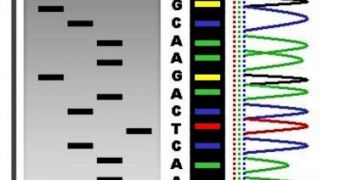A group of investigators at the Biodesign Institute has recently been awarded an impressive grant for the development of low-cost DNA sequencing technologies.
In the future, this medical test will be a routine part of standard healthcare, but, in order for that to happen, its costs needed to be brought down to Earth.
At this point, sequencing a person's DNA is a very complex task, and one that costs thousands of dollars to complete. But low-cost sequencing methods are possible, experts say.
Numerous research teams around the world are currently looking for a solution to this problem, and the Biodesign Institute team is at the forefront of such investigations.
Based at the Arizona State University (ASU), the group is led by researcher Stuart Lindsay, who is one of only 10 scientists in the United States to receive funds from the National Human Genome Research Institute (NHGRI).
This organization is a part of the National Institutes of Health (NIH). Its goal at this point is promoting the development of a third generation of DNA sequencing technologies, to replace existing ones.
As such, the NHGRI awarded Lindsay's team with a $860,000 grant, that the group will receive over a period of three years. The money was awarded so that the group could continue its state-of-the-art research into this field.
“We have discovered a new technique that uses a simple reagent to measure distinct signals that can be generated to distinguish the ‘A, G, C and T’ chemical bases that are the basic building blocks of DNA,” Lindsay reveals.
“Now, we will try to read short sequences of DNA using this technology, then make a device to read even longer stretches, perhaps even thousand or hundred of thousands of bases at a time,” the expert adds.
One of the main objectives the Biodesign Institute team set for itself is producing a sequencing technique that would cost $1,000 or less. In the past, the technique was prohibitively expensive, at over $100,000 per 3 billion base pairs.
“With this continued effort, we will identify improvements needed to increase the readout efficiency and also develop criteria for design of a nanopore sequencing system equipped with tunneling electrodes,” the team leader says.
“The reagents developed during the course of this research will be made available to other research groups developing nanopore sequencers that use electron tunneling as the readout,” adds Lindsay, who is also the ASU Regents’ Professor in physics and chemistry.
He also holds appointments as the Edward and Nadine Carson Presidential Chair in Physics, and director of the BI Center for Single Molecule Biophysics.

 14 DAY TRIAL //
14 DAY TRIAL //